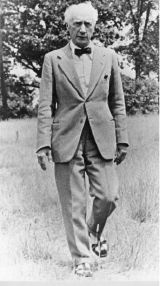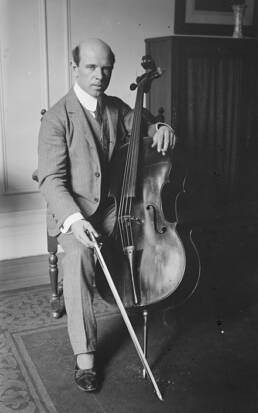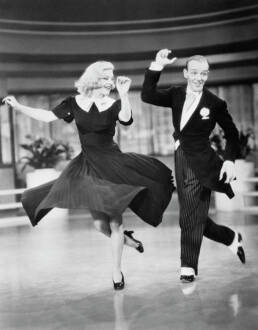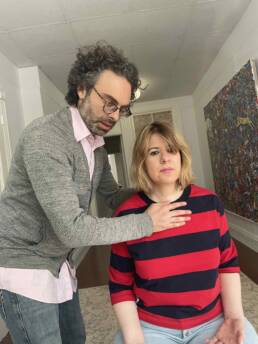Lessons in the Alexander Technique
A Hands On Experience of Poise.
Trustindex verifies that the original source of the review is Google. When I started working with John I was hopeless; I was in so much back pain I couldn't do anything, and had already spent tons on a whole bunch of "experts" who didn't help me improve AT ALL. Then I started working with John, and for a fraction of the price, and THROUGH ZOOM (!!!!!!!), he managed to teach me the basics of the Alexander Technique and together we completely changed me. Evidently, John knows about your body's mechanics far more than anyone else that I've gone to, no matter which fancy title they held, or the fact I needed to know somebody to get an appointment with them. I still remember feeling something's missing before going to sleep - oh, no pain, right, good night to you too upper back. Today I can do anything, all day long, like a bad mf, I'm basically superman now. Me and John worked so efficiently, I became basically a different person - I re-earned me as a kid, when I could just learn movements; when I could go all day long day after day. Just trust John, and commit to the process - you WILL get rewarded, and you'll thank yourself like f. He the GOATTrustindex verifies that the original source of the review is Google. John is a thoughtful practitioner who embodies the technique. From having ongoing pain to living a more thoughtful and intentional life, John has helped me break through big obstacles. Thank you!Trustindex verifies that the original source of the review is Google. Working with John is slowly but surely changing my life. Alexander Technique offers a physical/mental shift that I notice in my work and my personal life. The challenge is letting go of the idea of getting it ‘right’, or a ‘quick fix’. On the other side of that is the potential for some really transformative work. More than just posture and alignment, it’s rebalancing self-perception.Trustindex verifies that the original source of the review is Google. After a few sessions with John, i could see improvement, and how bad i was doing simple things, like holding my guitar , or just sitting on a chair! , a life changing for me!Verified by TrustindexTrustindex verified badge is the Universal Symbol of Trust. Only the greatest companies can get the verified badge who has a review score above 4.5, based on customer reviews over the past 12 months. Read more
What is F.M. Alexander's technique?
The Alexander Technique is a form of self-help that allows you to discover habits of held tension and gives you tools to both release this tension and prevent it from causing further harm or discomfort. Rather than attempting to alleviate a specific pain point – say knee pain in running or wrist pain while typing – this technique is general and will show you how the restoration of your overall upright poise can alleviate a specific problem. This poise has wonderful benefits for your overall psychological, physical, and emotional well-being and can be experienced by anyone with a curious attitude.

The pictures above are of rather exceptional individuals that have this upright poise that Alexander describes in his books. It is their attitude of attention in activity that is so captivating and gives them that almost indescribable ‘it’ quality. But why do I call this poise and not posture?
In a typical Alexander Technique lesson, you should expect to spend some time with a teacher guiding you from standing to sitting in a chair with the guidance and manipulation of their hands. These simple activities serve as the basis for examining how you are organising your whole self habitually and how you can invite change. The other portion of a lesson is spent lying down in active rest so that you can deepen your understanding of how to rest physically and mentally, release any unnecessary tension, and experience more of the full volume of your self.
This time spent lying down is the main study tool that you will have after your first lesson. As your understanding of the technique grows, you will begin to have some simple activities that you can do such as standing on toes or the vocal practice of the Whispered ‘Ah’. Each of these practices take no more than a minute to play with and can be incorporated into your day easily.
If you happen to have a specific activity that you would like help with such as holding a musical instrument, swinging a golf club, or public speaking, these may be addressed once you have a few lessons under your belt.
I personally view the simplicity of this technique like that of learning the blues. On the surface, there are only a few simple chords to learn and some basic rhythms. But in that simplicity, you can spend your lifetime playing and discovering new ways of expressing yourself.
Benefits of Learning the Alexander Technique
The Alexander Technique gives you tools to examine, understand, and possibly change patterns of habitual strain. This technique has been shown in clinical trials to alleviate back pain.
Given the general nature of this technique, I have personally found relief for joint strain generally and have experienced a greater sense of calm and ease within my self. I have personally found this work has helped with things like headaches and TMJ as well, but in my case these were both caused by extraneous neck tension; something the Alexander Technique addresses.
Please get in touch over email or phone and I will happily answer any questions you may have.






